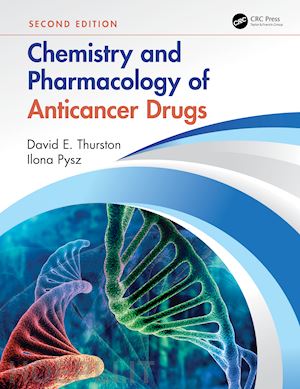While drug therapies developed in the last 80 years have markedly improved treatment outcomes and the management of some types of cancers, the lack of effectiveness and side effects associated with the most common treatment types remain unacceptable. However, recent technological advances are leading to improved therapies based on targeting distinct biological pathways in cancer cells. Chemistry and Pharmacology of Anticancer Drugs is a comprehensive survey of all families of anticancer agents and therapeutic approaches currently in use or in advanced stages of clinical trials, including biological-based therapies. The book is unique in providing molecular structures for all anticancer agents, discussing them in terms of history of development, chemistry, mechanism of action, structure–function relationships, and pharmacology. It also provides relevant information on side effects, dosing, and formulation. The authors, renowned scientists in cancer research and drug discovery, also provide up-to-date information on the drug discovery process, including discussions of new research tools, tumor-targeting strategies, and fundamental concepts in the relatively new areas of precision medicine and chemoprevention. Chemistry and Pharmacology of Anticancer Drugs is an indispensable resource for cancer researchers, medicinal chemists and other biomedical scientists involved in the development of new anticancer therapies. Its breadth of coverage, clear explanations, and illustrations also make it suitable for undergraduate and postgraduate courses in medicine, pharmacy, nursing, dentistry, nutrition, the biomedical sciences, and related disciplines. Key Features: Summarizes the fundamental causes of cancer, modes of treatment, and strategies for cancer drug discovery Brings together a broad spectrum of information relating to the chemistry and pharmacology of all families of anticancer agents and therapies Includes up-to-date information on cutting-edge aspects of cancer treatments such as biomarkers, pharmacogenetics, and pharmacogenomics Features new chapters on the "Evolution of Anticancer Therapies", "Antibody-Based Therapies", and "Cancer Chemoprevention"











